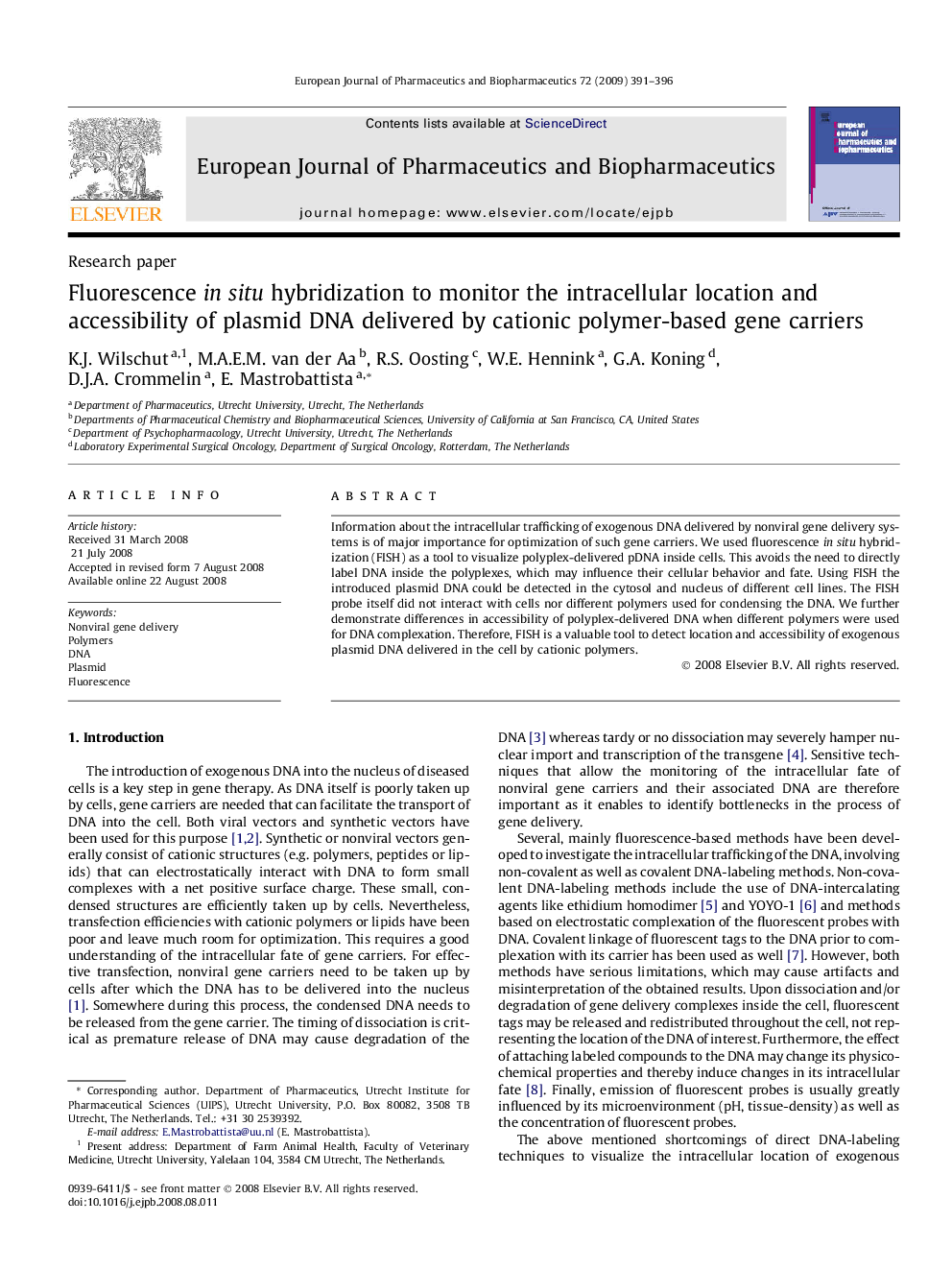| Article ID | Journal | Published Year | Pages | File Type |
|---|---|---|---|---|
| 2084484 | European Journal of Pharmaceutics and Biopharmaceutics | 2009 | 6 Pages |
Information about the intracellular trafficking of exogenous DNA delivered by nonviral gene delivery systems is of major importance for optimization of such gene carriers. We used fluorescence in situ hybridization (FISH) as a tool to visualize polyplex-delivered pDNA inside cells. This avoids the need to directly label DNA inside the polyplexes, which may influence their cellular behavior and fate. Using FISH the introduced plasmid DNA could be detected in the cytosol and nucleus of different cell lines. The FISH probe itself did not interact with cells nor different polymers used for condensing the DNA. We further demonstrate differences in accessibility of polyplex-delivered DNA when different polymers were used for DNA complexation. Therefore, FISH is a valuable tool to detect location and accessibility of exogenous plasmid DNA delivered in the cell by cationic polymers.
